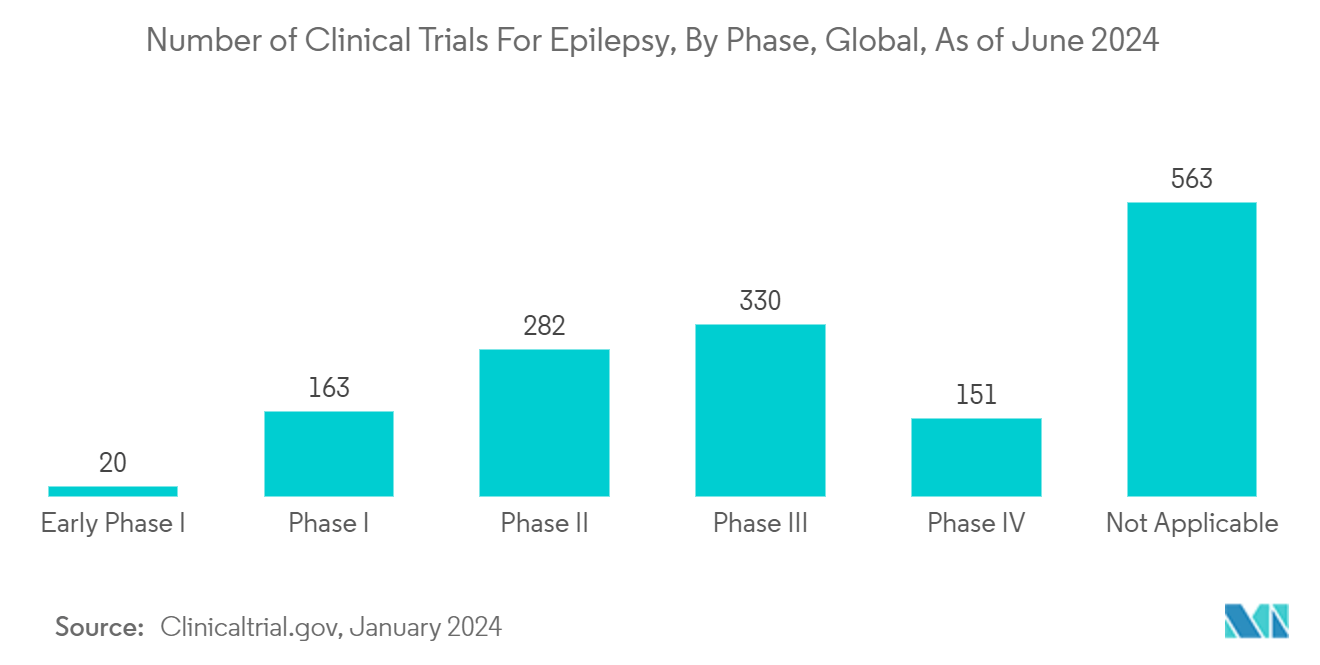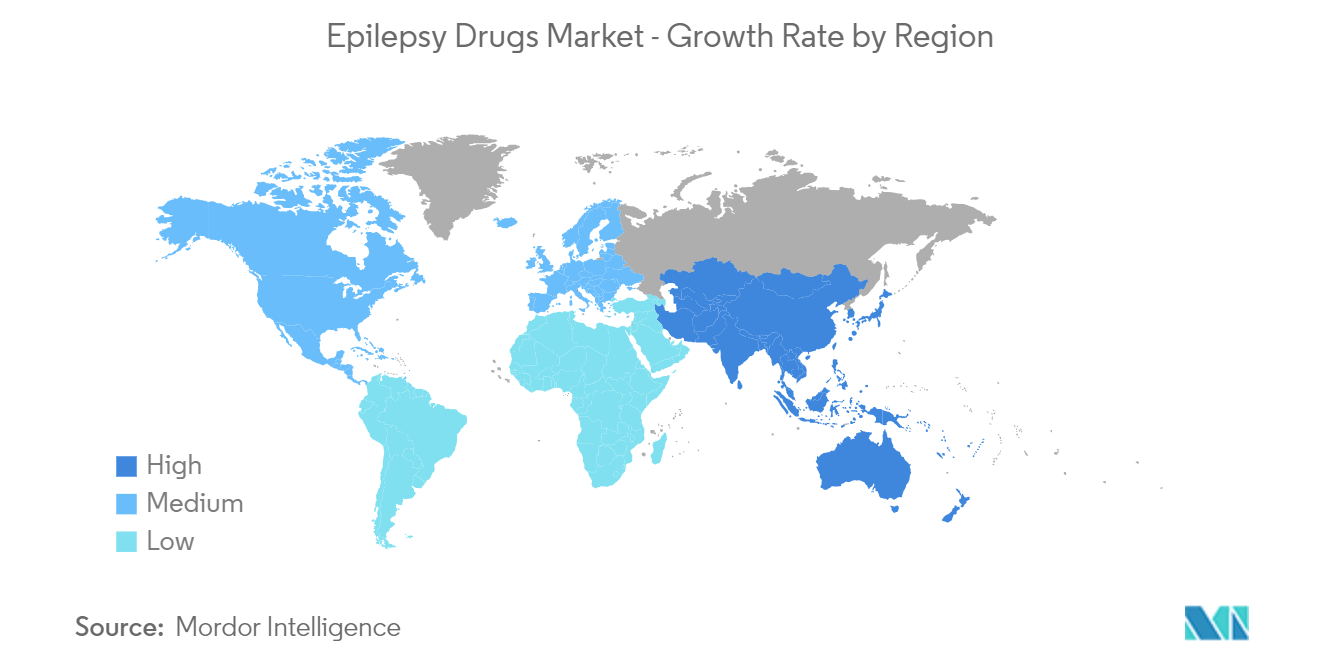Market Trends of Epilepsy Drugs Industry
Second Generation Anti-epileptics is Expected to Hold a Significant Market Share Over the Forecast Period
Second-generation anti-epileptic drugs (AEDs) refer to a class of medications that have been developed as newer alternatives to traditional or first-generation AEDs. These drugs are designed to offer improved efficacy, safety, and tolerability for the management of epilepsy. The growth of the second-generation anti-epileptics segment is driven by several factors, such as better efficacy and tolerability, fewer and less severe side effects, innovation, and patent expiration.
The growing prevalence of epilepsy globally contributes to a higher demand for effective and well-tolerated anti-epileptic medications, driving the growth of this segment. Furthermore, according to the article published in Frontier in Epidemiology in August 2023, the incidence rate of epilepsy was estimated at around 50 to 60 per 100,000 people each year, and up to 8% of people had at least one seizure in their lifetime. It is consistently higher than the rate of epilepsy in Australia. Thus, the growing prevalence of epilepsy globally contributes to a higher demand for second-generation anti-epileptic drugs, thereby boosting the segment’s growth.
Second-generation AEDs often demonstrate better efficacy and tolerability profiles compared to their predecessors, leading to increased adoption by healthcare providers. For instance, according to a study published in the MDPI Journal in February 2023, Gabapentin is recommended against partial epilepsy with/without secondary generalization and can be used in patients over three years of age. In addition, it may be used for neuropathic pain, restless legs syndrome, fibromyalgia, trigeminal neuralgia, multiple sclerosis, headache, anxiety, and postoperative pain. Thus, they have better efficacy against epilepsy and also have efficacy in treating other neurological or psychiatric conditions, broadening their market impact beyond epilepsy, thereby boosting segment growth.
Besides, market players are also acquiring other firms to expand their product portfolio. For instance, in January 2022, UCB acquired Zogenix for USD 1.9 billion to bolster its epilepsy portfolio by adding Fintepla (fenfluramine). It is a marketed drug for treating seizures associated with Dravet syndrome, a rare form of childhood epilepsy. This deal continues to expand UCB's extensive therapeutic offering in the epilepsy market, having gained a new product for patients with rare and difficult-to-treat pediatric orphan epilepsy syndromes.
Hence, owing to the new product launches and acceptance of second-generation epilepsy drugs, the segment is expected to grow over the forecast period.

North America is Expected to Hold Significant Share over the Forecast Period
North America is expected to show significant growth over the forecast period owing to the increasing burden of epilepsy coupled with the market players' strategic initiatives, awareness campaigns, and launches of new products. In November 2022, a press release by the CDC stated that epilepsy affected about 3.4 million Americans. About one out of 10 people may suffer from a seizure during their lifetime. There are over 260 epilepsy centers in the United States. Healthcare providers at these centers specialize in managing epilepsy and provide expert care to children and adults. Thus, the prevalence of epilepsy in the region is expected to increase the demand for its treatment and, thus, increase the market growth.
The approval of drugs for different age populations is also boosting the market's growth. For instance, in November 2023, Jazz Pharmaceuticals Canada Inc. announced that Epidiolex (cannabidiol oral solution) had been approved by Health Canada as adjunctive therapy for the treatment of seizures associated with Lennox-Gastaut syndrome (LGS), Dravet syndrome, or tuberous sclerosis complex (TSC) in patients two years of age and older.
Furthermore, various organizations have initiated research on epilepsy drugs, which is likely to contribute to the growth of the market. For instance, in October 2022, Avicanna Inc. expanded its research collaboration in epilepsy with a new collaboration with the University of Toronto. It is to explore the efficacy of Avicanna's proprietary formulations in pre-clinical models for epilepsy.
Thus, the market is expected to grow over the forecast period due to the rising burden of epilepsy, increasing research and development activities, and product launches by the market players.


